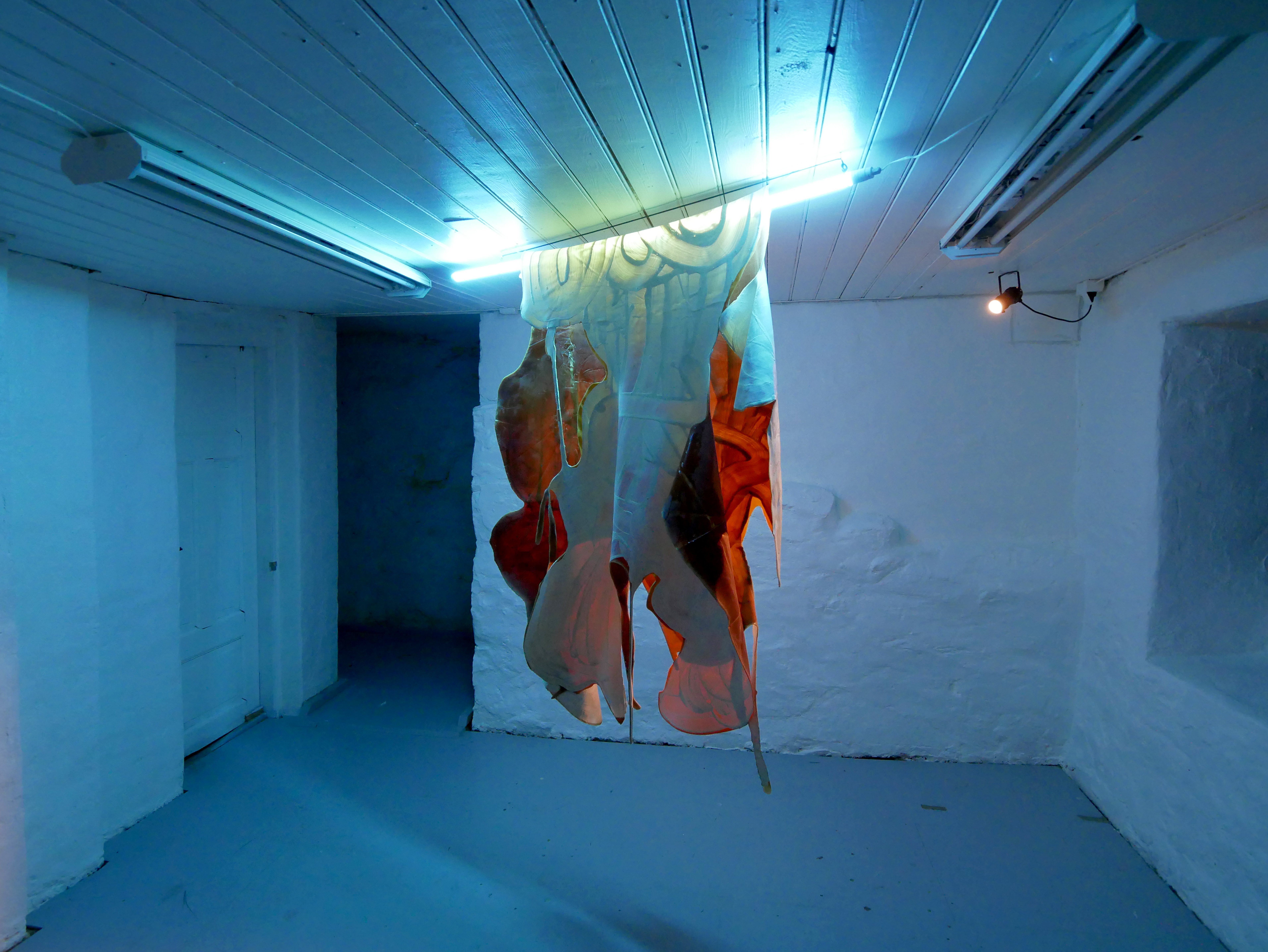JULIE LILLELIEN PORTER
Julie Lillelien Porter’s exhibition titled, “Ylang Ylang”, meditates on entrances, passages and portals. The materials in the show effectively fold into themselves taking on the domains of roadway building materials, while neon illuminates and guides the audience through abstraction expressionist work with latex. Porter is a difficult artist to pin down. Her expression ranges across materials, but just as important, she plays with philosophical positioning. The effect is a balancing act between material gesture, textual practice and conceptual art-making. Unique to this show is Porter’s attention to olfactory senses, and their relations to the materials used. Tar is mixed with essential oils, ammonia with spray paint. In “Ylang Ylang”, phantosmia (or phantom smells) function as olfactory hallucinations or flashes beckoning us to follow her sculptural trail. Porter’s exhibition will take over both the downstairs gallery and the open-air cube challenging any singular positioning or experience of her multi-disciplinary practice.
Like a punk-rock Butoh act, the first show of the year in 2022 at MLAG is a sweeping gesture taking our gaze off our shoes towards the heavens amid this violent Norwegian winter. Precocious mounting of neon in the en Plein air gallery sway us towards countercultural undercurrents demonstrating Porter’s easy knack for compositions. One may think back to Raymond Pettibon, another artist with masterly control over darkly humorous and fluid lines.
As a curator, this season I have proposed that invited artists work to interrogate the rough themes of the agent, agency, reflex as general positions within exhibition practices. I can think of no better artist to hit a home run and be first up to bat. Porter’s concern with the portal as a general architectural concern is an interesting object as we as make associations with the three major philosophical positions important to her show, firstly Jeremy Bentham’s Panipticon, the second, Emanual Levinas’s Other, and lastly, Michel Foucault’s Discipline and Punish. In all three, the relational self to the other is inescapable. In Porter’s use of portals, there is a clear conceptual line towards reflection about who or what we are before we enter a portal. Don’t we like to check our appearance before entering? And who hasn’t stolen an assuring glance in their reflection before entering a meeting? But the glance at the portal simultaneously checks our hair just as much as it checks the balance of power between the person entering and the situatedness of crossing the threshold. One might say we have disciplined ourselves to stop and check before entering. Why don’t we do so freely? In today’s portals, we receive commands to wash our hands, wear masks, stay home if we are sick etc., Porter’s artistic practice is closely related to philosophical concerns with rules that are unwritten, the ones we have learned to impose upon and discipline ourselves with.

